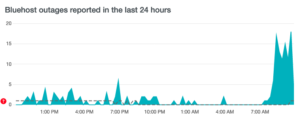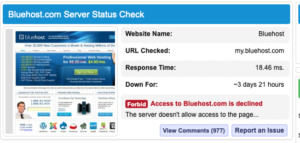This is a story that’s been bubbling on for a while, but it looks like the U.S. government is about to slam down export restrictions on chipmaking equipment.
The administration of US President Joe Biden next month is to broaden curbs on US exports to China of semiconductors used for artificial intelligence and chipmaking tools, several people familiar with the matter said.
The US Department of Commerce intends to publish new regulations based on restrictions communicated in letters earlier this year to three US companies — KLA Corp, Lam Research Corp and Applied Materials Inc, the people said, speaking on the condition of anonymity.
Every wafer fabrication plant in the world uses equipment from one of those three companies. Applied Materials and LAM Research (along with Tokyo Electron) have their fingers in almost all areas of chipmaking equipment (PVD, CVD, Etch, etc.), while KLA (formerly KLA-Tencor) dominates the wafer inspection equipment segment. Add ASML in the Netherlands, and those five absolutely dominate the semiconductor equipment market.
The letters, which the companies publicly acknowledged, forbade them from exporting chipmaking equipment to Chinese factories that produce advanced semiconductors with sub-14 nanometer processes unless the sellers obtain commerce department licenses.
This is where things get tricky. SMIC claims they can do 7nm, but everyone outside China doubts they can do it reliably, repeatably and profitably. SMIC announced they’re about to start manufacturing 14nm, and that they can probably do. Practically, they’re the only semiconductor manufacturer in China that can do sub-14nm, as just about everyone at the top of the next biggest semiconductor manufacturer, Tsinghua Unigroup, just got arrested in July.
There’s even talk that they’re actually zeroing in on FinFET technology specifically, though they may also ban sales of older chipmaking equipment as well.
Without a continued stream of machines, spare parts and technical know-how from those five semiconductor giants, China’s semiconductor industry is doomed. China’s domestic semiconductor equipment industry is essentially garbage, and they’re so far behind in so many areas that they can’t even steal their way to parity. The knowledge gulf is just too vast.
Min-Hua Chiang at the Heritage Foundation notes just how badly China’s domestic semiconductor industry is screwed.
According to World Trade Organization statistics, China’s trade deficit in integrated circuits and electronic components (including Hong Kong’s trade deficit) has almost doubled from the equivalent of $135 billion in 2010 to $240 billion in 2020.
The growing trade deficit in integrated circuits reveals one crucial fact: Achieving technological self-reliance is still a faraway Chinese dream. To keep its exports growing, China has no other way but to keep importing advanced chips to assemble into consumer goods with high-tech intensity (e.g., smartphones, tablets, and the like).
Although China (including Hong Kong) is also the largest exporter of semiconductor chips in the world, less than 7% of chips produced in China were made by Chinese semiconductor companies in 2021.
More than 90% of chips produced in China are made by foreign firms. In other words, China’s exports of semiconductor chips are overwhelmingly dominated by foreign companies.
Its inferior level of technology is the main reason for China’s chip reliance on foreign firms. While Chinese firms are stuck with advancing toward 7nm chips, the Taiwan Semiconductor Manufacturing Co. and Samsung are progressing towards mass production of 3nm chips this year. Intel plans to take over TSMC’s leading role in semiconductor technology by 2025.
The competition among a few tech giants in the U.S., Taiwan, and South Korea is clear, and the Chinese firms are not likely to jump into the global technology competition in the semiconductor industry anytime soon.
The U.S. restrictions on exporting chipmaking equipment to China’s largest semiconductor firm, Semiconductor Manufacturing International Corp., have not only deterred China’s technological advancement, but also exposed the fundamental mismanagement problems inside China’s semiconductor industry.
Xi might not have noticed his industry’s poor performance had China been able to continue to produce chips with foreign equipment.
Some parts about the Tsinghua scandal snipped.
Several Taiwanese executives leaving China’s semiconductor industry last year is another major setback in the development of China’s semiconductor industry.
China not only spent tremendously on building chip plants and purchasing expansive equipment, but also on recruiting talent from overseas. Over the past few years, China recruited more than 3,000 skilled workers from Taiwan to work in China’s semiconductor industry.
China amassed enormous capital, talent, and foreign equipment, but the problem is with governance. Xi’s absolute authority encouraged a rush into China’s semiconductor industry. Moreover, the extraordinary integration of the public and private sectors in China has twisted industrial development toward short-term profit-making, instead of long-term accumulation of manufacturing strength and technological improvement.
Xi’s “wolf warrior” diplomacy has further overshadowed the outlook of its semiconductor industry. China’s success relies on close partnerships with various suppliers and customers in different countries across the globe. Alienating them on the geopolitical front only undermines those relationships.
The U.S. ban on exporting chipmaking machines to China was the straw that broke the Chinese semiconductor industry’s back.
On top of that, the CHIPS and Science Act just signed into law bans semiconductor companies receiving U.S. government subsidies from investing in China for the next 10 years. There are major loopholes in that prohibition, but if Congress can manage to keep the administration’s feet to the fire—including by tightening the legal restrictions—it could have a major impact on China’s tech development.
In addition, the U.S. has extended the export restriction to 14 nm chipmaking machines to the Semiconductor Manufacturing International Corp. and other foreign chipmakers in China. A specific electronics design automation software for making advanced chips is also banned from exportation to China.
Without foreign investment and inputs, China is only likely to deepen its reliance on importing advanced chips from overseas.
Peter Zeihan notes (correctly) that China’s semiconductor industry has been singularly unable to fab advanced chips on their own.
Not to mention that fraud still abounds. Chinese CPU semiconductor startup Quillion Technology closed up shop three months after raising $89 million.
$89 million is probably enough to get you to tape-out for a fabless semiconductor house designing a smaller chip (or maybe even a low-power ARM-based CPUs for embedded markets), but it’s a woefully small sum for a real cutting-edge CPU company, and laughable if they intended to be an integrated design manufacturer fabbing their own chips, where building even a trailing edge fab starts in the billions.
More on that topic:
Takeaways:
From 1984 to 1990, the Ministry of Electronics Industry delegated the management of the vast majority of state-owned electronics enterprises to local provincial and municipal governments. While these state-owned enterprises (SOEs) obtained more autonomy, something strange happened. These companies imported outdated integrated circuit production lines that had no commercial value. The wasteful projects cost money, but people used the opportunities to take foreign trips, receive kickbacks, and send their children abroad. And this happened on a large scale.
Pretty much classic ChiCom behavior.
China’s high-tech industry, like its financial industry, is dominated by powerful CCP families, and the Jiang Zemin family is one of them. In 1999, Jiang Zemin gave his oldest son, Jiang Mianheng, the reins of China’s “autonomous chip development.” As vice president of the Chinese Academy of Sciences (CAS) and president of the Shanghai branch for many years, the junior Jiang has long held the turf of China’s science and technology sector. He is also personally involved in the semiconductor business. His Shanghai Lianhe investment has holdings of Shanghai Zhaoxin Semiconductor Company.
Chen Jin, a former junior test engineer at Motorola, joined Shanghai Jiaotong University in 2001 after returning to China.
He was given the responsibility to develop the “Hanxin” chip, an important part of the state-run high-tech development program known as the “863 Program.” In just three years, Chen obtained 100 million in R&D funding and applied for 12 national patents. On Feb. 26, 2003, Chen’s team officially released the “Hanxin 1” chip. The Shanghai Municipal Government, the Ministry of Information Industry, and the Chinese Academy of Sciences all backed his work. The expert panel declared the “Hanxin 1” and its related design and application development platform as being the first of its kind in China and achieving an important milestone in the history of China’s chip development. Subsequently, Hanxin 2, 3, 4 and 5 chips were launched, all of which were claimed to have reached an advanced level globally. The Hanxin series of chips even entered the General Equipment Procurement Department of the Chinese military. However, 3 years later, on Jan. 17, 2006, “Hanxin 1” was revealed to be completely fake. Chen downloaded a Motorola chip source code through a former Motorola colleague. Then he secretly bought a batch of Motorola dsp56800 series chips, paid a peasant to scrape the original Motorola logo with sandpaper, and asked a local Shanghai print shop to print the “Hanxin” logo on it.
China correctly identified semiconductors and semiconductor equipment as key technologies for truly becoming the world’s preeminent technological manufacturing giant. Unfortunately for them (and fortunately for us), the CCP’s endemic culture of corruption and their top-down command economy are antithetical to the onrush of capitalist technological innovation that powers Moore’s Law.






